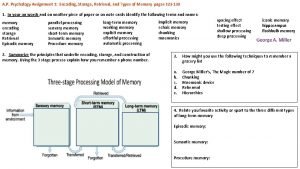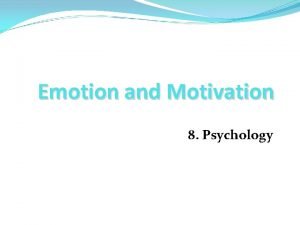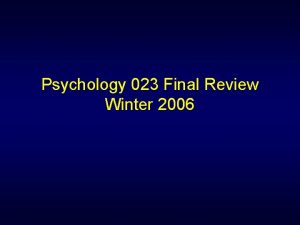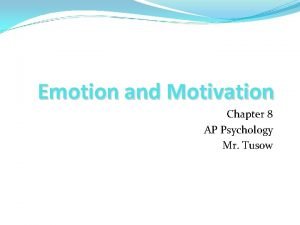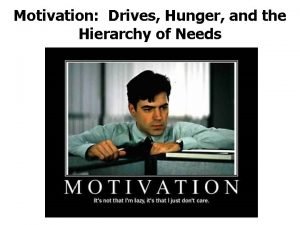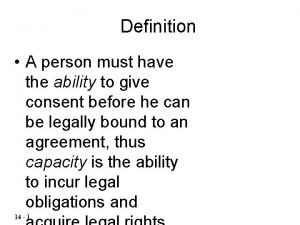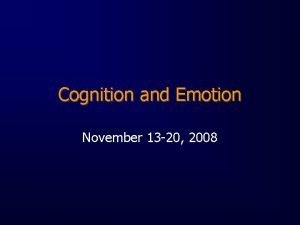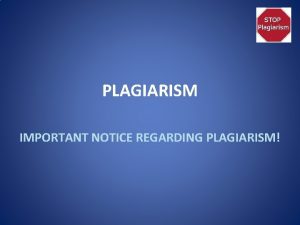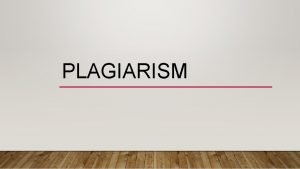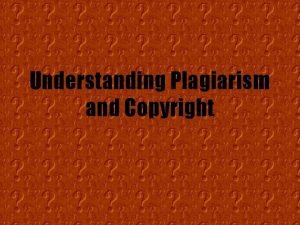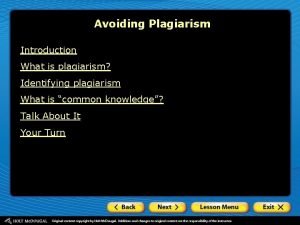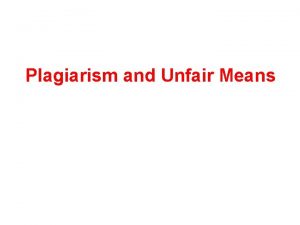A Plagiarism Guide for Elearning 101 Shaundra Dodson











- Slides: 11

A Plagiarism Guide for Elearning 101 Shaundra Dodson Boyd, Instructor

What is Plagiarism? “According to the Merriam-Webster Online Dictionary, to "plagiarize" means: • to steal and pass off (the ideas or words of another) as one's own • to use (another's production) without crediting the source • to commit literary theft • to present as new and original an idea or product derived from an existing source. • In other words, plagiarism is an act of fraud. It involves both stealing someone else's work and lying about it afterward. ”

Types of Plagiarism • "The Ghost Writer" The writer turns in another's work, word-for-word, as his or her own.

Types of Plagiarism • The Photocopy" The writer copies significant portions of text straight from a single source, without alteration.

Types of Plagiarism • "The Potluck Paper" The writer tries to disguise plagiarism by copying from several different sources, tweaking the sentences to make them fit together while retaining most of the original phrasing.

Types of Plagiarism • "The Poor Disguise" Although the writer has retained the essential content of the source, he or she has altered the paper's appearance slightly by changing key words and phrases.

Types of Plagiarism • "The Labor of Laziness" The writer takes the time to paraphrase most of the paper from other sources and make it all fit together, instead of spending the same effort on original work

Types of Plagiarism • "The Self-Stealer" The writer "borrows" generously from his or her previous work, violating policies concerning the expectation of originality adopted by most academic institutions.

Why is Plagiarism Wrong? Penn State University lists these good reasons why plagiarism is wrong: • • • You deny yourself the opportunity to learn and practice skills that may be needed in the future. You also deny yourself to opportunity to receive honest feedback on how to improve your skills and performance. Your integrity is questioned which means your teachers/peers may stop believing you. You commit fraud on teachers who are evaluating your work. You deprive another author due credit for his or her work. You show disrespect for your peers who have done their own work.

Consequences of Plagiarism • Expulsion • Removal and Failure of the Course • Legal Action

References • http: //tlt. its. psu. edu/plagiarism/tutorial/whyw rong • http: //www. plagiarism. org/plag_article_educat ional_tips_on_plagiarism_prevention. html • http: //www. ehow. com/list_7253780_conseque nces-plagiarism-students. html
